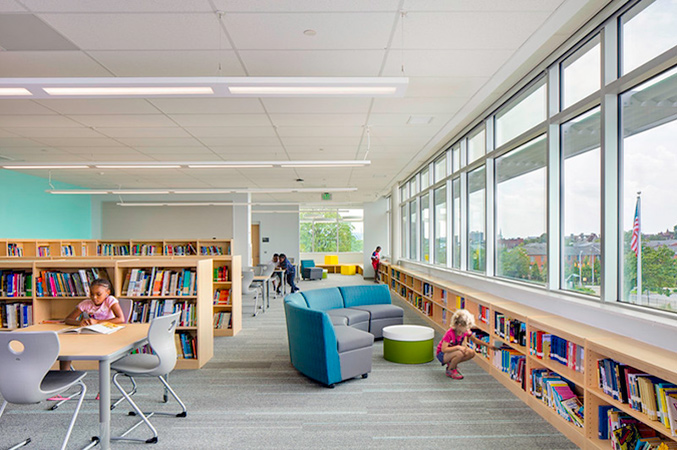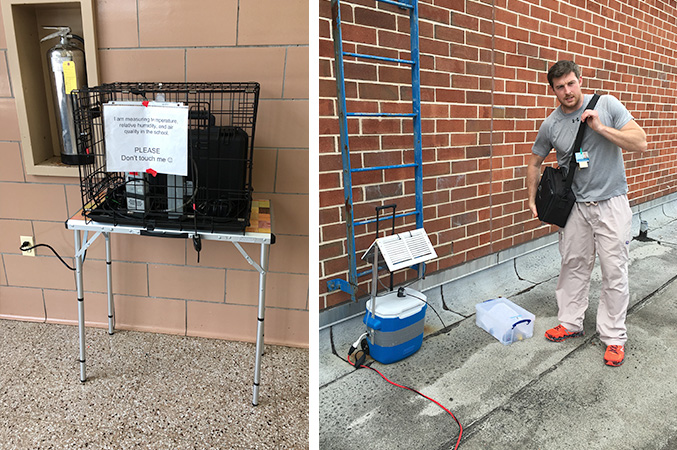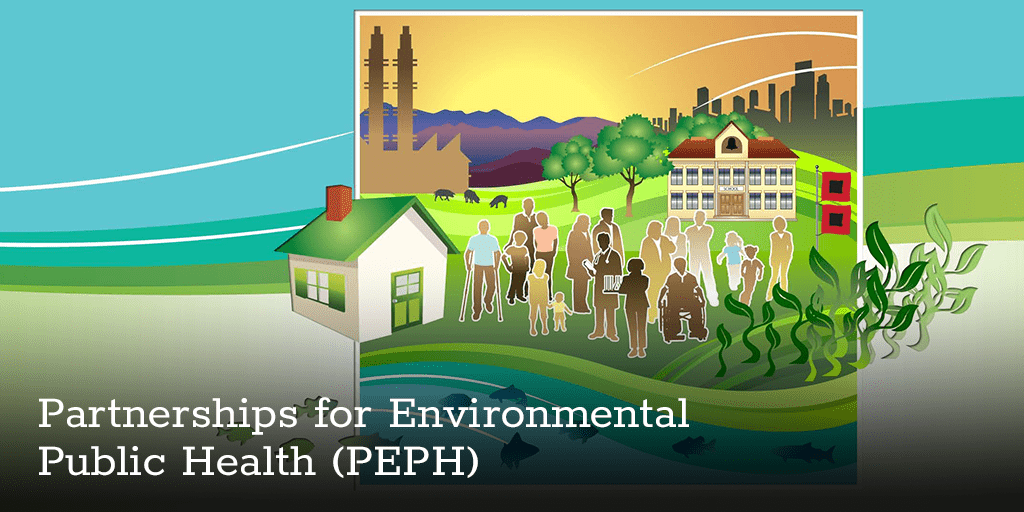NIEHS-funded researchers at Johns Hopkins University determined that indoor air quality in schools in Baltimore improved after school renovations. In a paper, the team describes how they examined air quality and temperature in school buildings before and after renovations and provides details on the magnitude of improvements to indoor air quality.
Air quality in schools is a concern for children’s health, in part, because children spend a large amount of time there. Children are especially susceptible to poor health outcomes — particularly asthma — from exposure to air pollution because their lungs are still developing.
Renovating schools to improve indoor air quality may, therefore, be an effective community intervention that benefits many children in one location, particularly in underserved communities at highest risk of poor health outcomes due to environmental exposures. The January 2022 PEPH podcast on healthy buildings provides more information on health effects of indoor air quality.
Lake Clifton Park building after school renovations. (Photo Courtesy of MCN Build, Photo Credit: Judy Davis/studioHDP)
School Renovation Program Reaches Underserved Students
The school renovations were conducted as part of the 21st Century School Building Program, established through a collaboration between Baltimore City Public Schools, the Maryland Stadium Authority, the City of Baltimore, and the State of Maryland. The program aims to improve the quality of public school buildings in Baltimore City and make a positive impact on local communities.
An independent engineering firm conducted a study of all schools in Baltimore City and assigned a score to each school based on its condition. Schools with the poorest conditions were prioritized for renovation. The schools’ population was 99% students of color, and about 94% of students received free or reduced-price lunch through the National School Lunch Program.
“We know that underserved communities are often exposed to higher levels of harmful air pollutants than other populations,” stated Meredith McCormack, M.D., M.H.S., director of the NIEHS-funded Bridging Research, Lung Health, and the Environment Collaborative Center in Children’s Environmental Health Research and Translation. “School renovation funding often overlooks urban public school districts, so these buildings already had poor ventilation and inefficient temperature regulation. But renovations can have a meaningful impact on the students’ health and well-being and that of the community.”
The 21st Century School Building Program engages the local community through regular meetings to plan school renovations. The renovation program also strives to improve the community immediately surrounding each school through the Investing in Neighborhoods and Schools to Promote Improvement, Revitalization, and Excellence program. Residents and local organizations provide input on plans for the neighborhood. Program staff create plans for changes, and the community members review the plans. The program has implemented projects such as planting trees and updating sidewalk infrastructure along the routes that children take to walk to school.

Dorothy I. Height Elementary School Media Center after school renovations. (Photo courtesy of Cho Benn Holback + Associates)
Researchers Determine Effects of Renovations on Indoor Air Quality
The researchers, who knew of the renovation program through existing connections with Baltimore City Public Schools, measured indoor air quality before renovations by sampling carbon dioxide, carbon monoxide, particulates, and temperature inside each of 29 schools. Samples were taken in each school over a two-week period three times for one year. One classroom and one common space were sampled at each school. Outdoor temperature measurements and samples of particulates were also taken in order to compare any changes in indoor samples with outdoor environmental conditions. These sampling methods were repeated after renovations were completed in seven of the schools.
Researchers compared pre-renovation and post-renovation measurements, as well as the values to standards for acceptable ranges from the American Society of Heating, Refrigerating, and Air Conditioning Engineers. They found that pre-renovation, carbon dioxide inside the schools exceeded the acceptable range 30% of the time on average for all schools. With the renovations, indoor carbon dioxide levels decreased, and they exceeded the acceptable range only 10% of the time. Given that carbon dioxide levels are a way to gauge a building’s fresh air ventilation, the results indicate that ventilation significantly improved.
The researchers also analyzed particulates and temperature before and after renovation. They found that particulate levels exceeded acceptable limits 2% of the time before renovation. After renovations, particulate matter remained below limits 100% of the time. Temperature improvements were also observed. Notably, while schools sometimes experienced temperatures above 80 degrees Fahrenheit before renovation, no schools reported excessive temperatures after renovation.

(Left) Indoor air monitoring equipment is set up inside a school. (Right) Team member Kristopher Spicer sets up outdoor air monitoring equipment. (Photos courtesy of Meredith McCormack)
“Our results show that renovating these school buildings made significant improvements in indoor air quality measurements that can have an impact on student health and even their school performance,” said McCormack. “Improved ventilation through updates to the HVAC infrastructure is particularly striking and can have a strong influence on the students’ health. The COVID-19 pandemic in particular has shed light on the importance of indoor ventilation and good air quality for health and safety. These schools’ new HVAC systems could not have come at a better time and have likely supported students’ health.”
In the future, the research team hopes to examine health outcomes among students in the renovated schools in order to determine whether improved air quality has had a positive effect on student health. Such work would help determine the public health efficacy of school renovations and might provide support for replicating this program in other communities. The researchers also continue to build on relationships with schools and community partners. They have recently started a project called Asthma CHAMPS to support asthma management through partnerships with Baltimore City Schools and the Health Department. They are also directly reaching students through an educational program, the Lung Health Ambassador Program, and are planning to build a Lung Health Corps of volunteers to advance advocacy for children’s environmental health.
Source link
www.niehs.nih.gov



